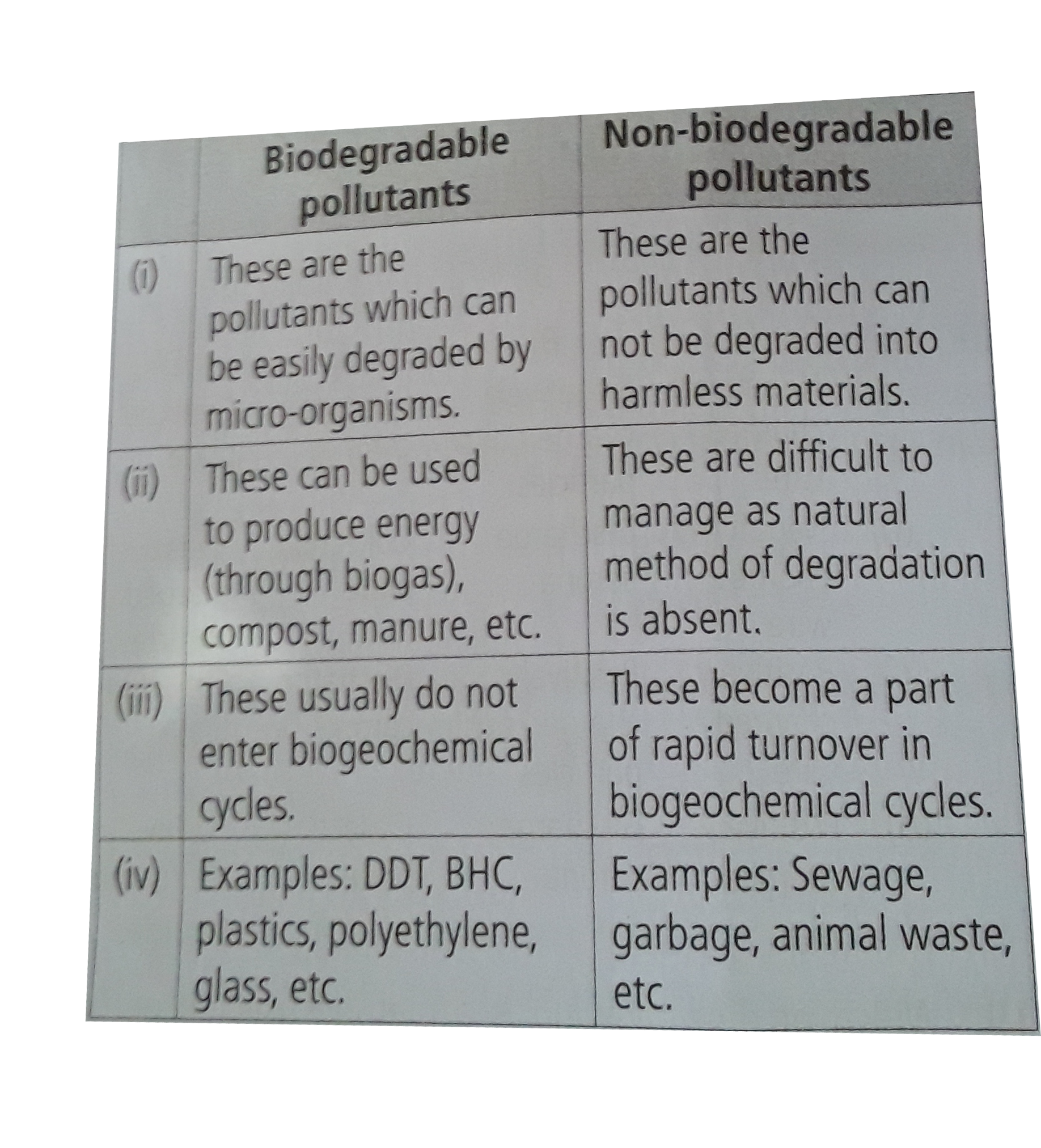Why are some substances biodegradable and some non-biodegradable?
Step-by-Step Solution:
1. Definition of Biodegradable Substances:
- Biodegradable substances are materials that can be broken down or decomposed by microorganisms such as bacteria and fungi. This process involves the natural decay of organic matter.
2. Examples of Biodegradable Substances:
- Common examples include paper, vegetable waste, cotton, and food scraps. These materials can be easily decomposed by microorganisms in the environment.
3. Definition of Non-Biodegradable Substances:
- Non-biodegradable substances are materials that cannot be broken down by microorganisms. They remain intact in the environment for a long time, leading to pollution.
4. Examples of Non-Biodegradable Substances:
- Examples include plastics, glass, and polythene. These materials do not decompose naturally and can accumulate in landfills and oceans, causing environmental harm.
5. Environmental Impact:
- Biodegradable substances are generally less harmful to the environment because they can be recycled back into the ecosystem. In contrast, non-biodegradable substances contribute to pollution and can have detrimental effects on wildlife and natural habitats.
6. Conclusion:
- The key difference between biodegradable and non-biodegradable substances lies in their ability to be decomposed by microorganisms. This distinction is crucial for understanding their environmental impact.
- Biodegradable substances are materials that can be broken down or decomposed by microorganisms such as bacteria and fungi. This process involves the natural decay of organic matter.
- Common examples include paper, vegetable waste, cotton, and food scraps. These materials can be easily decomposed by microorganisms in the environment.
- Non-biodegradable substances are materials that cannot be broken down by microorganisms. They remain intact in the environment for a long time, leading to pollution.
- Examples include plastics, glass, and polythene. These materials do not decompose naturally and can accumulate in landfills and oceans, causing environmental harm.
- Biodegradable substances are generally less harmful to the environment because they can be recycled back into the ecosystem. In contrast, non-biodegradable substances contribute to pollution and can have detrimental effects on wildlife and natural habitats.
- The key difference between biodegradable and non-biodegradable substances lies in their ability to be decomposed by microorganisms. This distinction is crucial for understanding their environmental impact.
Topper's Solved these Questions
Similar Questions
Knowledge Check
The following table summarises the differences between biodegradable and non-biodegradable pollutants. Pick out the wrong diggerences and select the correct answer.
 A(i) and (iv)B(ii) and (iv)C(iii) and (iv)D(ii), (iii) and (iv)
A(i) and (iv)B(ii) and (iv)C(iii) and (iv)D(ii), (iii) and (iv)
The biodegradable polymer is :
View SolutionDifferentiate between biodegradable and non-biodegradable substances.
Give examples.
View SolutionWhat are biodegradable and non-biodegradable detergents? Give one example of each class.
View SolutionGiven one significant difference between each of the following :
(i) Pollution and Pollutants .
(ii) Biodegradable and Nonbiodegradable pollutants .
View SolutionBiodegradable pollutants is
View SolutionWhich one is biodegradable polymer?
View SolutionAccount for the following:
Detergents are non-biodegradable while soaps are biodegradable.
View Solution
